June 19, 2025 | 11:44 GMT +7
June 19, 2025 | 11:44 GMT +7
Hotline: 0913.378.918
June 19, 2025 | 11:44 GMT +7
Hotline: 0913.378.918
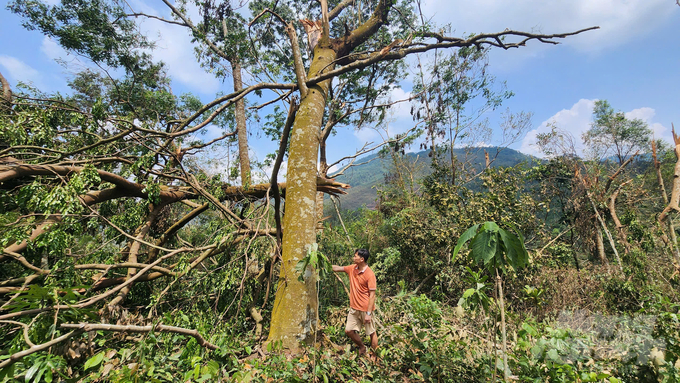
The nearly 50-year-old lim tree of Mr. Trieu Tien Loc's family was uprooted and fallen everywhere. Photo: Nguyen Thanh.
Typhoon No. 3 (Yagi) caused catastrophic consequences for the economy of Quang Ninh province, particularly in the fisheries and forestry sectors, which have been considered key drivers of economic development in the mining region.
Under the eaves of his house, Mr. Trieu Tien Loc (Tan Dan Commune, Ha Long City) sits in a daze by himself. Perhaps he still can't believe that what the vicious typhoon has caused is real. "The lim forest that my family has preserved for over 60 years has gone through many upheavals, but this time, Typhoon No. 3 has shattered everything", he said, his gaze directed toward the forest, his voice filled with sorrow.
Mr. Loc's family began planting and protecting this lim forest in the 1960s, long before he was born. After nearly 70 years, the lim forest had covered the vast hillside, creating a diverse ecosystem with a variety of plants and becoming a habitat for many species of animals.
“Before the storm hit, I sent my wife and children to my in-laws' house, staying behind alone with the forest that has been intertwined with my family like flesh and blood. When the storm swept through the forest, the howling wind, the cracking branches and the loud crashes of falling trees made me feel like my insides were being ripped apart”, Mr. Loc recalled.
Mr. Loc's father, “village elder” Trieu Tai Cao, was the one who passed on the love for the forest to generations of his descendants, a love that transformed the lim forest into an important member of the family. “As the storm ravaged outside, I was anxious, but human strength is too small. Knowing I couldn’t do anything else, I lit an incense stick and prayed to my ancestors and my father for protection for the forest that was struggling in the storm”, Mr. Loc shared.
“Peering out the door to assess the situation outside, I saw the sky darkening. I was startled to see a 20-meter-high canarium tree leaning dangerously, its canopy covering the entire house. Fortunately, just as it was about to crush the house, the tree didn’t fall any further. Then, seeing this, my neighbors came to help by cutting branches to protect the cherished home that my father built long ago. Perhaps the ancestors heard my pleas, otherwise, I wouldn’t have been able to keep my life”, Mr. Loc recalled.
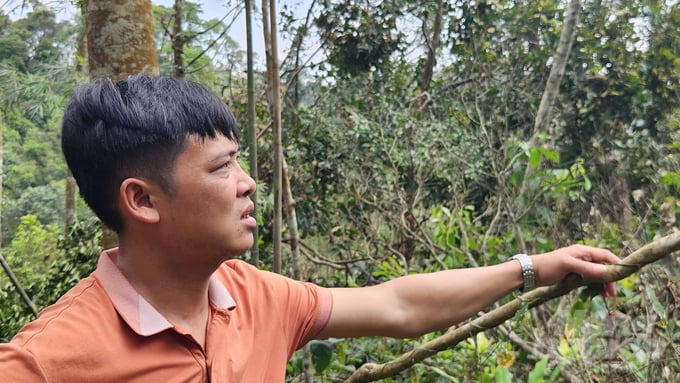
Mr. Trieu Tien Loc could not hide his sadness at the severe destruction of the precious forest. Photo: Nguyen Thanh.
After the storm subsided, the lim forest was also eerily quiet, devoid of bird songs. Following in Mr. Loc's footsteps, we could no longer recognize the image of the ancient lim forest with its nearly 70-year-old trunks and lush green canopies that once filled the sky during our last visit.
The 10-hectare lim forest is now devastated, and Mr. Loc estimates that about 50-60% of the trees over 50 years old have been broken or toppled. “Those trees that lost their branches might have a chance to recover, but those that broke at the trunk or fell will not survive. It will take at least 5-10 years to restore this forest, and it will take several decades for it to return to what it was before the storm hit”, Mr. Loc said, tears welling in his eyes.
600 lim trees, along with many native species and valuable medicinal plants, were heavily impacted by storm number 3. “The trees that were toppled have no chance of recovery. I have reported to the local authorities to come up with a plan for handling and salvaging them. I still cannot calculate the exact monetary damage, but the loss in spirit is immeasurable. My family is gradually cleaning up and dealing with the broken trees, clearing the forest and planning to plant more trees for restoration”, Mr. Loc shared.
His son, Trieu Tien Khoi, still goes to the forest with his father every day and witnesses the devastation of their once-thriving woodland. Khoi cannot hide his sadness: “I’m very sad. Before, I would come to the forest to hear the birds singing and see the lush greenery, but now it's all gone. I hope the forest will return to what it used to be”.

Decades-old green trees toppled by the storm. Photo: Nguyen Thanh.
According to statistics from the Quang Ninh Department of Agriculture and Rural Development, storm number 3 caused damage to over 117.600ha of forest in the province. The planted forests suffered primarily from trees being broken off at the trunk, uprooted or blown over. Among them, the area of forests aged 1-5 years that were toppled means that local residents will lose nearly everything and will not be able to salvage anything; for areas of forest older than 5 years, approximately 40% of the investment value may be salvageable. The livelihoods of those who plant forests are also facing many difficulties as their sources of income and means of production are affected.
In Ba Che district, one of the localities considered the forestry capital of the mining area, only desolation and barrenness remain. It is known that Ba Che district has a total forest and forest land area of over 56.000ha, accounting for 93.4% of the total natural area; of which the area of production forest and forest land is nearly 49.000ha.
The forests have been severely devastated, leaving many forest owners empty-handed after years of planting and nurturing. Currently, both businesses and residents are mobilizing manpower to every patch of forest to assess and document the damage. For instance, at Ba Che Forestry One Member Limited Company, out of approximately 2.600ha of production forest, up to 2.300ha have been destroyed by super typhoon Yagi, with estimated damages reaching up to 2.9 million USD.
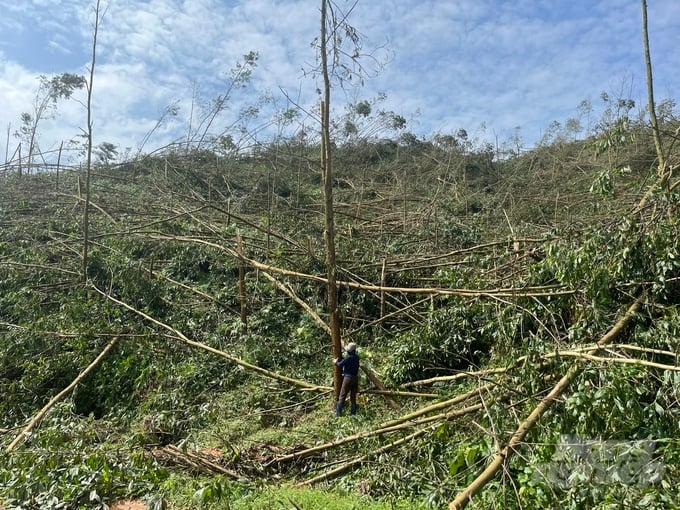
Residents of Ba Che District assess the damage to the acacia forest after Typhoon No. 3. Photo: Nguyen Thanh.
With a choked voice, Mr. Chiu Van Quynh, Deputy Director of Ba Che Forestry Company, sadly said: "Most of the trees have broken or fallen. This time, they will starve! Now we just hope to harvest the acacia trees that are 4 to 5 years old from both the company and the local people after the damage, and that the wood processing factories won’t depress prices. We also hope that banks will provide low-interest loans to replant the forest, and the government will have special support policies for the forestry sector after natural disasters".
"I don’t know what to say right now!" said Nguyen Van Thai (Nam Son Commune, Ba Che District), stunned by the situation of his 5ha of acacia trees, which are over 4 years old, being struck down by the storm. "This year, the acacia trees looked great; my family estimated that next year’s harvest would help pay off our debts and leave some left over for reinvestment, buying a few household items", Mr. Thai said regretfully.
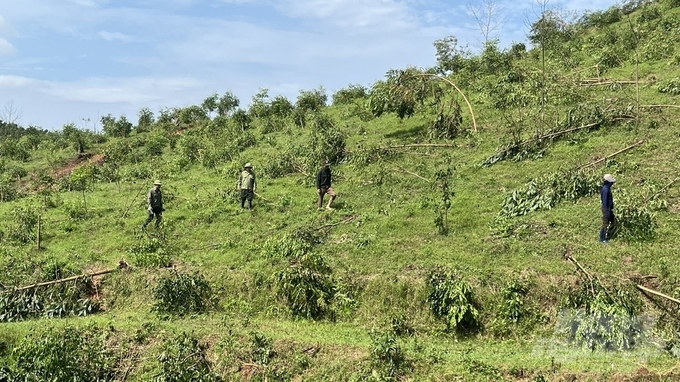
More than 5 hectares of 3-year-old lim, gioi and lat trees, belonging to Ba Che Forestry Company, have been completely broken or fallen. Photo: Nguyen Thanh.
In the days following the storm, many households growing forests in the area took advantage of the situation to salvage the trees that had fallen across their trunks or been uprooted, in order to sell the wood and recover some capital for replanting. The amount harvested is only about 40%, due to the poor quality of the wood and the purchase value is only about 20% of the usual price. However, many households do not have enough resources to salvage and clean up their forests.
"The price of acacia wood is low, while the cost of hiring people to collect the fallen trees is high. Additionally, hiring people to clear the acacia forest costs 120 USD/ha, but now the cost of cleaning the forest has risen to 240 USD/ha, so my family still leaves the forest devastated after the storm", said Mr. Thai.
Currently, forest growers are facing many difficulties, especially in cleaning up the forests, which were meant for replanting and the loans taken out for reforestation that are still owed to the bank. Households and enterprises involved in forestry are eagerly hoping for policies that can help them overcome these challenges, such as facilitating loans for replanting, debt deferral and tax exemptions for land.
According to statistics from the Department of Agriculture and Rural Development, Typhoon No. 3 caused severe damage to agriculture. Specifically, 2.692 aquaculture facilities were affected; 116 fishing vessels sank; 7.622 hectares of rice and crops were flattened and flooded; 388.000 livestock and poultry were killed or swept away and 117.000 hectares of planted forest were toppled. The estimated total damage in the province is around 1 billion USD.
Translated by Phuong Linh
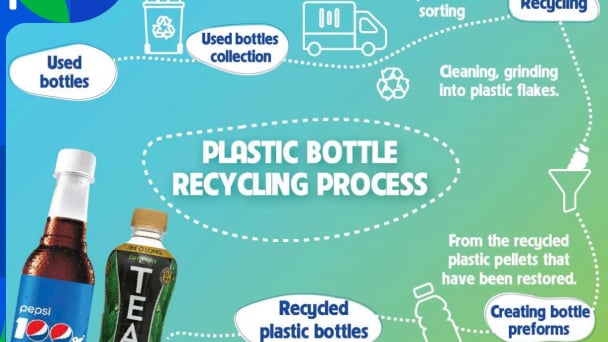
(VAN) To address plastic pollution, closing the plastic recycling cycle will bring significant economic and environmental benefits.

(VAN) According to the Binh Thuan Department of Industry and Trade, in the first five months of 2025, Binh Thuan's dragon fruit export turnover increased by 20.65% compared to the same period last year.
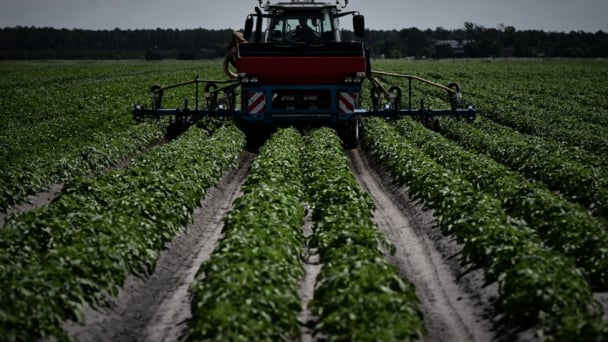
(VAN) EU countries on Thursday gave final approval to new tariffs on fertilizer imports from Russia, a move aimed at cutting off revenue that could support Moscow’s war in Ukraine, despite concerns from European farmers.

(VAN) The working delegation from the Ministry of Agriculture and Environment conducted an important trip to the Netherlands to strengthen strategic partnerships and sustainable development in the agricultural sector.

(VAN) The letter ‘A Plea from the Ocean’ not only evokes emotion but also awakens the human conscience to the responsibility of protecting life on Earth.

(VAN) The Department of Agriculture in South Africa has announced the country’s first mass vaccination of poultry to prevent local birds from contracting avian influenza.

(VAN) Establishment of the Mekong Delta Regional Agricultural Linkage Center, aiming for a closed value chain, deep processing, trading platforms, and international market connectivity.